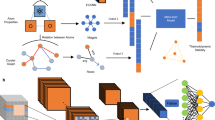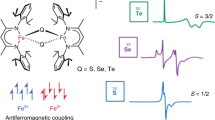Abstract
THROUGH the kindness of Dr. Kapitza and Dr. Webster, we have had the opportunity of examining in the Cambridge Magnetic Laboratory a number of compounds to which formulæ with single-electron bonds have been assigned. These compounds are of two principal types: (1) Pervalent salts, including PCl5, SbCl5, SbMe3Cl2, SbMe3Br2, SbMe3I2, the α and β forms of TeMe2Cl2, TeMe2Br2 and TeEt2I2, μ-TeMe2I2 and μ-TeMe2I4, and a number of analogous compounds such as PCl3, POCl3, AlCl3, TlI3, BiI3, CsI3. (2) Co-ordination compounds, including the Li·, Be··, Al···, Co··, Ni··, and Fe··· derivatives of benzoylcamphor. Except in the case of substances containing a metal of the transition series, these compounds have all proved to be diamagnetic. We therefore conclude that all the electrons are magnetically paired, just as they are in compounds in which the valency-electrons are present as pairs of shared electrons or as ‘lone pairs’ of unshared electrons. The numerical results of these experiments will be published later.
This is a preview of subscription content, access via your institution
Access options
Subscribe to this journal
Receive 51 print issues and online access
$199.00 per year
only $3.90 per issue
Buy this article
- Purchase on SpringerLink
- Instant access to full article PDF
Prices may be subject to local taxes which are calculated during checkout
Similar content being viewed by others
Author information
Authors and Affiliations
Rights and permissions
About this article
Cite this article
LOWRY, T., GILBERT, F. Magnetic Properties in Relation to Chemical Constitution. Nature 123, 85 (1929). https://doi.org/10.1038/123085b0
Issue date:
DOI: https://doi.org/10.1038/123085b0



